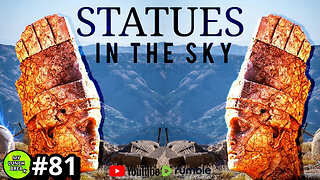Inside China's Belt and Road's Biggest White Elephant: Melaka Gateway, Part 1
It was supposed to have been one of China’s Belt and Road’s crown jewels: a 546-hectare, seaport-driven new urban area spanning four artificial islands strategically positioned in the Strait of Malacca. It was to be a place of glistening shopping malls, tourist resorts, luxury condos and theme parks. It was to have a glittering business district, a robust marina, a giant “Malaysia Eye” ferris wheel, the largest cruise ship terminal in Southeast Asia and a seven-star hotel. Melaka Gateway was billed to become the catalyst that would completely alter the face of Melaka and the southwest coast of peninsular Malaysia, transforming the region from a low-key epicenter of traditional cultures and traditions—a legitimate UNESCO World Heritage site—to a modern, booming, economic powerhouse. But eight years later the project is little more than a stagnant slab of reclaimed land.
Just over the narrow strip of water separating Melaka Gateway from the coast sits a place called Portuguese Settlement. There is no equivalent for this place anywhere else in Malaysia—or the world. The people who live there are the direct descendants of the original Portuguese colonists that arrived in the 16th century. For hundreds of years they’ve subsisted as fishermen, craftsmen and cooks. They speak their own language—Papiah Kristang, a Portuguese creole that is mutually intelligible with modern Portuguese—they are Catholic, and they stand in stark contrast with the Chinese and Malay communities which have surrounded them for five centuries.
Now their very existence is under threat. Reclaiming land inevitably destroys the local marine ecosystem, and the lifeblood of Portuguese Settlement is the sea. What was once pristine blue waters full of fish is now a silty, mucky swath of coastline devoid of marine life; the fishermen now need to venture far out to sea and many of them are calling it a day.
This film is a look at a completely unique community on the verge of being removed from the sea and wiped off the map. It seeks to document the community as it is today and shows the struggles of a people fighting for their very existence and cultural identity.
-
 3:18:11
3:18:11
Fresh and Fit
19 hours agoBody Count Matters ONLY For Women. Change My Mind.
146K154 -
 8:00
8:00
Adam Does Movies
1 day agoKILL Movie Review - Get Off The Train Already!
56.7K4 -
 6:11
6:11
Praxis Homesteading and Survival Skills
23 hours agoNo One Puts Solar Panels Here... But they SHOULD!
63.8K50 -
 6:58
6:58
scoutthedoggie
23 hours agoAirsoft War Games at The Fort Scotland
61.2K1 -
 3:01
3:01
Hack
1 day ago3 Ideas about making DIY gadget projects for a smartphone
63.2K16 -
 13:35
13:35
RealReaper
13 hours agoThe Acolyte Episode 6 Nothing Happens
46.8K9 -
 17:25
17:25
CarlCrusher
20 hours agoIn Search of the Lost Lair of the Nevada Skinwalker
45.6K13 -
 22:05
22:05
DepressedGinger
1 day ago*UNHINGED* Libs threaten to k*ll Trump, get visit from secret service
38.9K39 -
 10:31
10:31
Tactical Advisor
1 day agoMy SWAT Sniper Rifle Breakdown
34.6K1 -
 27:42
27:42
MYLUNCHBREAK CHANNEL PAGE
23 hours agoStatues in the Sky?
39.1K73